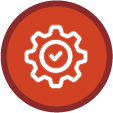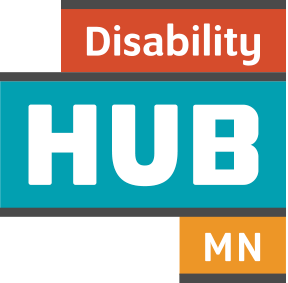People in the plan phase want competitive integrated employment but:
- Aren't sure what it looks like or what they want to do
- Have barriers or conditions for employment
- Have little or no experience in competitive employment

Work Toolkit:
People in the plan phase want competitive integrated employment but:


Waiver employment development services (plan) help a person discover personal strengths, interests and conditions for employment so they can set their work goals. People on waivers who want to access this service should talk to their waiver case manager.
For a complete list of covered services, limitations and more, see the community-based services manual.
Expected outcomes from the plan phase include:
The person defines overall work goals that align with their strengths, interests, talents and conditions for success. The goals are informed by person-centered discovery and work-based learning experiences.
Results in:
The person knows how work and benefits can go together to support their goals, as well as the tools and resources to help them manage their benefits while working.
Results in:
The person is set up for success in the find phase with resources and supports in place to help them reach their work goals. They have a positive summary and portfolio that informs their job search.
Results in:
Waiver employment service providers use the following activities to help people reach expected service outcomes.
Includes:
Includes:
Includes:
Includes:
Includes:
Includes:

Dually enrolled providers (providers who provide both waiver employment and VRS/SSB services) offer a more seamless transition to the find phase. It's important to help people understand their provider options and make an informed choice about which provider is best for them.
See a list of dually enrolled providers at MinnesotaHelp.info. Or, do your own search for a targeted list of dually enrolled providers:


The employment portfolio is a package of outcome products you help the person create during the plan phase. The portfolio informs the person's job search and helps set them up for success in the find phase.
The portfolio's cover page is a positive summary (a summary of what was learned during the plan phase). Watch this training video (11:04) to learn more about the positive summary and how to use it.
Within the portfolio, include everything you did with the person that can help them in the find phase. This prevents the person from having to repeat themselves and prevents others from repeating work you've already done. For example, the person could use the one-page profile to introduce themselves to potential employers or the integrated support star to talk about about their support needs with a VRS counselor.
Below is a list of key items to include in the portfolio. It's OK to use different tools or activities to accomplish the same goals.
Explore hands-on tools > person-centered discovery to find the tools below and others:
Explore hands-on tools > benefits planning to find the tools below and others:
Explore hands-on tools > application and resumes for the tools below and others:
Explore hands-on tools > job exploration for the tools below and others:

The positive summary offers an at-a-glance look at key discoveries from the plan phase that can support a person-centered job search. The positive summary should be completed with the person when they're ready to move on to the find phase.
To create and share a positive summary in My Vault, check the work path for an activity called My Positive Summary. You can also find a positive summary fillable form and sample under hands-on tools > positive summary.
You may find it helpful to fill out the summary form as you go. Then, take time near the end of the service to review and update the summary. Make sure the person reviews and approves the completed summary. It's their summary and should reflect what they want to share.
Explain to the person how their portfolio can help them communicate and reach their job goals. This will help them decide who should see their portfolio.
You can help them share their portfolio by using their My Vault account, or you can get a release to share the portfolio on their behalf.
My Vault makes it easy to build, upload and share the portfolio. For example:

If the person wants VRS/SSB services to help find a job, work closely with the local VRS/SSB to ensure smooth service transitions and rapid engagement. Waiver providers are encouraged to connect with VRS/SSB early and often during the plan phase.
Contact VRS/SSB when:
The VRS/SSB waiver liaison is a new role created to make it easier for waiver employment service providers and waiver case managers to connect with VRS/SSB.
If you're not sure where to start or you want to talk with someone who's been specially trained in working with waiver services, a VRS/SSB waiver liaison can be a great resource. You can connect with a VRS/SSB liaison any time you have questions about VRS/SSB or want to collaborate. If you have a good working relationship with your local VRS/SSB office or counselors, you don't need to work through a liaison.
Review the VRS and SSB Waiver Liaison Contact List to find a liaison in your area.
Most VRS offices are housed within a CareerForce location. Check this interactive map of VRS offices across the state and this listing of SSB offices. Help the person find the office that is most convenient for them.
If the person decides to pursue a job search with support from VRS/SSB, waiver employment service providers can help the person:
If the person doesn't want to create a My Vault account, they can share the information with VRS/SSB by email, or they can sign a release to allow you to share the information on their behalf.
At the Hub, there’s no such thing as a wrong question. We're here to help. Contact us Monday to Friday, 8:30 am to 5 pm.
